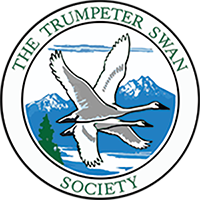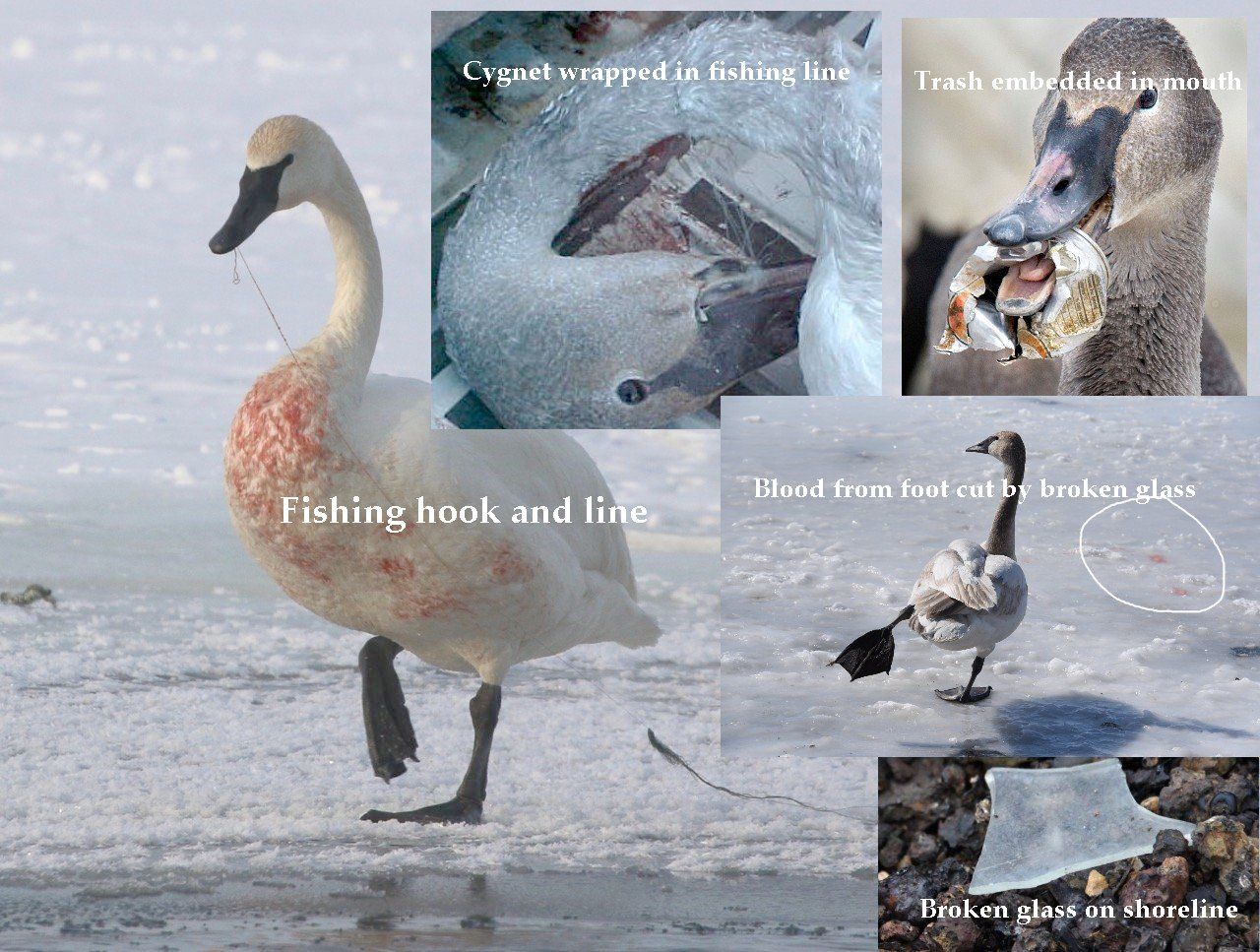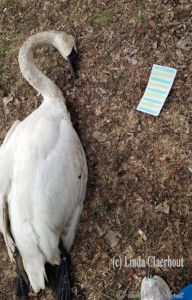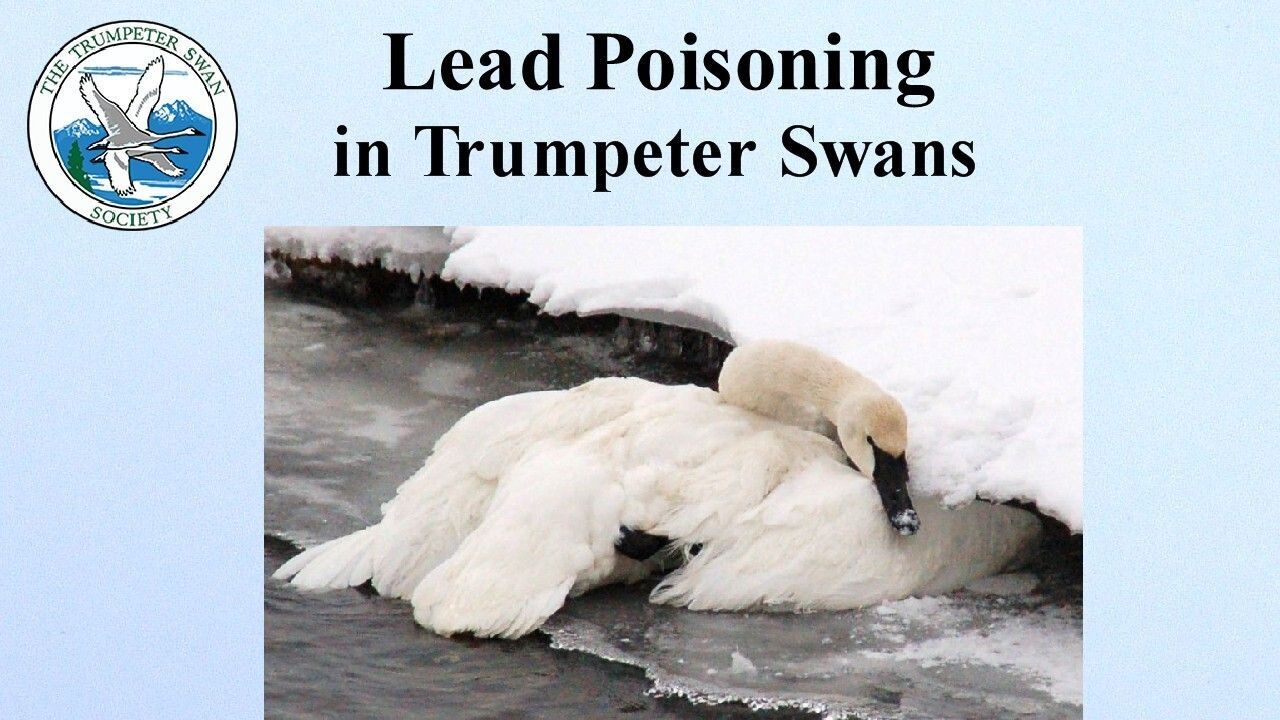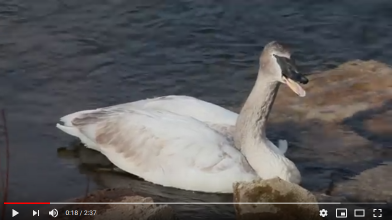Photograph by Margaret Smith
Above: Lead poisoned adult swan at the far right at the snow bank. Note its drooping wings and isolation, compared to healthy swans on left. Here's "The rest of the story." Within a minute of the photo being taken, the sick swan was unable to hold its head up. Its head fell face first into the snowbank. It struggled to lift its head out of the snow, then curled its head and neck onto its body. It died later that day.
Swan Health
Thanks to your support, we continue our decades long work on swan health issues.
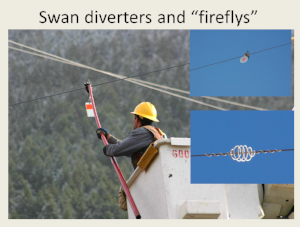
A variety of "diverters" offer utility companies options for preventing bird collisions. Contact APLIC (Avian Powerline Interaction Committee)
Two major sources of swan deaths are powerline collisions, and lead poisoning through ingestion of lead ammunition and lead fishing tackle.
We work with utility companies to safeguard swan flights over power and transmission lines, by advocating "marking" the lines with diverters. Diverters help birds see powerlines sooner and avoid collisions.
We also advocate to keep transmission lines from crossing important bird migratory corridors. If you need assistance working with your local utility company to mark powerlines where swan deaths occur, please contact us.
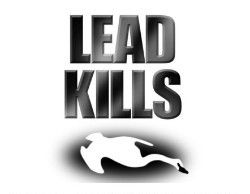
For decades we have been working on swan mortality issues in the Pacific northwest, notably Washington and British Columbia.
One particular swan health project is Judson Lake which straddles the border of Washington and British Columbia. It is an important wintering site for many Pacific Coast Population swans. Judson Lake has a known lead "hot zone" that has been responsible for hundreds of swan deaths.
We have worked for many years with Washington Department of Fish and Wildlife, University of Washington, the United States Fish and Wildlife Service, and the Canadian Wildlife Service to reduce swan deaths there. Watch a video of swan monitoring in action!
We work across North America on swan health issues. Our efforts include public education, presentations, working with partners to raise awareness about swan and waterfowl health issues, and much more.
Learn more about lead poisoning. Be informed. Spread the word to keep wildlife safe.
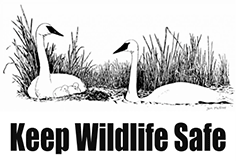
-
This article, written by Margaret Smith, TTSS Executive Director, was written for a sporting magazine. It explains symptoms you may see is a lead-poisoned swan.
-
In this webinar (1 hr) you will learn about one of the most serious threats to swan health- lead poisoning. Lead poisoning is caused by lead fishing tackle or ammunition such as lead pellets that are ingested by swans in the fields or in wetlands, rivers and ponds where they feed.
You will learn:
• Why lead is a problem
• How to recognize a sick swan in the wild
• How to safely capture a sick swan to take to a wildlife rehab center
• Diagnosis and treatment of a sick swan at a wildlife rehab center
• What Minnesota has done to address lead poisoningDecember 11, 2024
"Of particular note was the discussion of visible (physical) symptoms. The discussion of treatment and the costs was very interesting." -
This video highlights the dedication of the Washington Department of Fish and Wildlife to monitor and capture sick swans wintering in northwest Washington. TTSS has been a partner for many years in this effort to monitor swan deaths in this important Trumpeter Swan wintering area.
-
This video by Art Juchno, shows a cygnet shortly before rescue, later being diagnosed by a wildlife rehabilitation center with lead poisoning
-
Part 1. This video, taken at the Minnesota Wildlife Rehabilitation Center, shows a young swan brought in with lead poisoning being prepped for 'gastric lavage' to remove the lead pieces in its stomach. The 'radiogram' which shows the lead pieces is explained.
-
This short video from the Minnesota Wildlife Rehabilitation Center shows the lead-poisoned young trumpeter swan receiving 'gastric lavage' to flush out the lead pieces in its stomach. The procedure and monitoring of the swan is explained.
-
Management Strategies Lead Toxicity: A Threat to Wildlife.
-
Making a Difference in the Fight Against Lead Poisoning in Iowa's Wildlife
-
Includes safe tackle tips and resources
-
Technical resources to help hunters make the switch to non-lead ammunition
You can help!
If you or someone you know hunts or fish, please switch to non lead products.
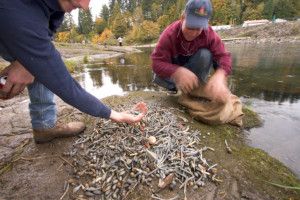
Keep wildlife safe. Switch to non toxic fishing tackle. Keep lead out of our waterways.
Do you fish or know someone who does? Get your FREE list of online nontoxic fishing tackle suppliers.
Just complete the form below and download the list so you can keep wildlife safe TODAY.
